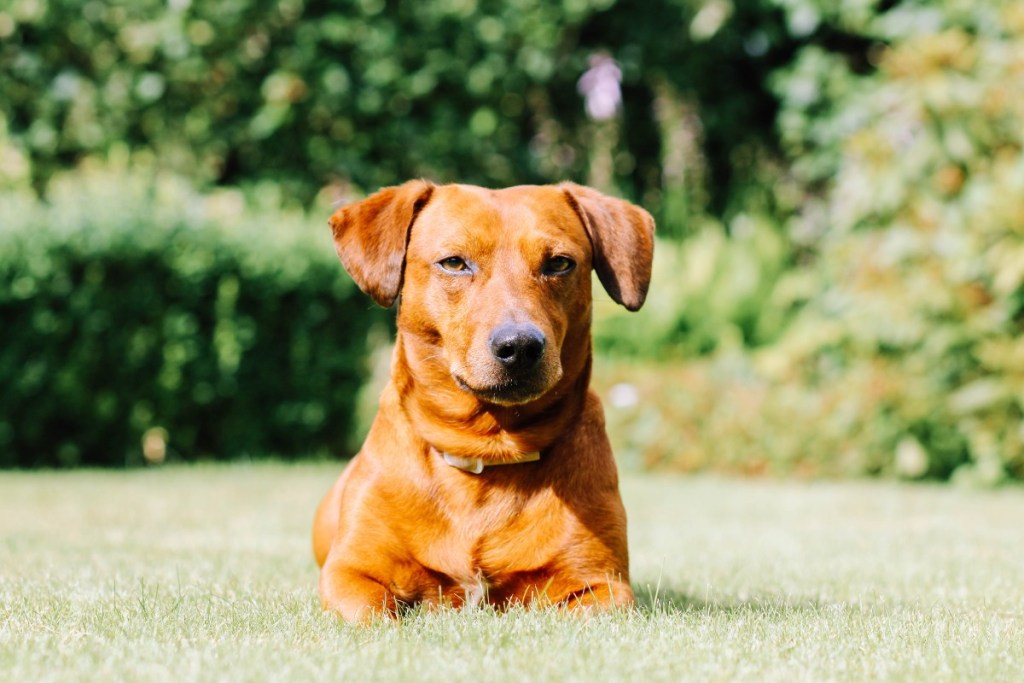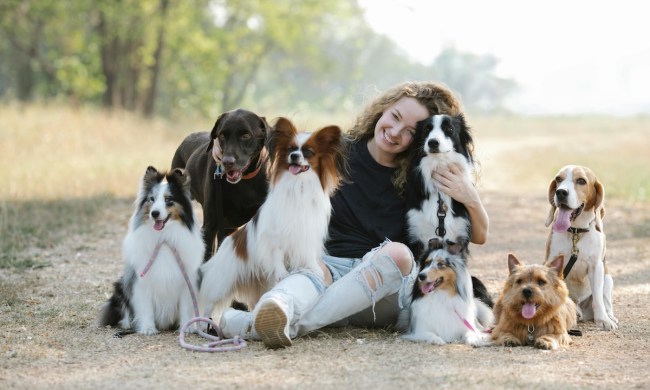Dachshund parents aren’t being facetious when they say they have a “hot dog.” The spunky pups with long bodies and short legs look like wiener dogs.
There are two types of Dachshunds. The standard Dachshund is 8 to 9 inches tall and weighs 16 to 32 pounds, while mini Dachshunds are typically 5 to 6 inches tall and weigh under 12 pounds. Coats also vary. You can find wire-haired, smooth, or long-haired wiener dogs.
You can’t simply judge a book by its cover, especially when it comes to dogs. You’ll want to get to know a dog’s personality and lifestyle needs to ensure you can take on the responsibility of giving them everything they need for as long as they need it.
Here’s what experts say about typical Dachshund characteristics and how to figure out whether this breed is the right one for you.

What are the qualities of a Dachshund?
The Dachshund’s many charming characteristics have made this breed a favorite among pet parents over the years. Here’s what you usually take on when you adopt a wiener dog.
They love their human(s)
Dachshunds are very lovey-dovey with their family, but there are a few caveats. Some Dachshunds highly prefer one person, and they’re hit-or-miss with young children. A small, wobbly child can be intimidating to a tiny pup. If you have children, bring them to meet the Dachshund you are thinking of adopting, and ask the shelter or rescue staff if they think the pup would be a good fit for your family.
Dachshunds don’t require much grooming
If you’re not big on making frequent trips to the groomer, a Dachshund may be a good option for your family. They do not need daily grooming—an occasional brush and regular baths and nail trims at home will do. Dachshunds aren’t known to shed much, though you can expect some hair on clothes and furniture.
These pups are playful
Dachshunds are curious and fun-loving, and they make great playmates. Because they’re tiny, long runs and hikes aren’t up their alley. However, they’ll love a good game of fetch or a trip to the dog park. Dachshunds are usually good with other dogs and pets.
Training could be a challenge
The AKC says that Dachshunds are eager to please. Other experts agree that this breed is intelligent and learns quickly, but they warn that Dachshunds can be a bit stubborn. Training your wiener dog may take some patience. Persistence and tons of positive reinforcement can help you bring out the best in your Dachshund. Reward-based training works well for this breed.
Do Dachshunds bark a lot?
Dachshunds have a lot to say, and they have no problem voicing their opinions by barking. The AKC says this breed is very vocal. Part of the reason is that Dachshunds are pretty vigilant and protective, though they are usually open to strangers.
You may not be able to stop a Dachshund from barking completely, but some ways to limit it include:
- teaching your dog the word “quiet”
- not giving them attention when they bark
- tiring them out through exercise
- leaving out toys or puzzles to engage and distract them
Are Dachshunds aggressive?
One study, released in 2008, said that Dachshunds were the most aggressive dog breed. One in five Dachshunds has attempted to bite or has successfully bitten a stranger, according to the report.
That said, many Dachshunds are sweet and loving animals. Socializing and training a pup from an early age can mitigate any aggressive behaviors later in life. Why? When you socialize and train a dog, you teach her to adapt to multiple situations and to listen to your commands, including “leave it,” “quiet,” and “let’s go.” You can use these commands to avoid problems if your Dachshund appears uncomfortable with another human or dog.
Dachshunds are famous for their hot-dog-like appearance. They have long backs and tiny legs. However, it’s their personalities that many pet parents want to eat up. Favorite Dachshund characteristics include their spirited and loving personalities. No two Dachshunds are alike, though. Some may be more of a challenge to train than others — these pups are whip-smart but can be stubborn. Dachshunds tend to be good with adults, but sometimes they gravitate toward one person. They are usually good with other pets but may not be best for a house with young children. Dachshunds do typically bark a good bit, so keep that in mind if you live in close proximity to neighbors. You’ll want to really get to know a Dachshund before adopting one. A shelter staff member or breeder can give you the low-down on the specific dog you are looking to bring home.




